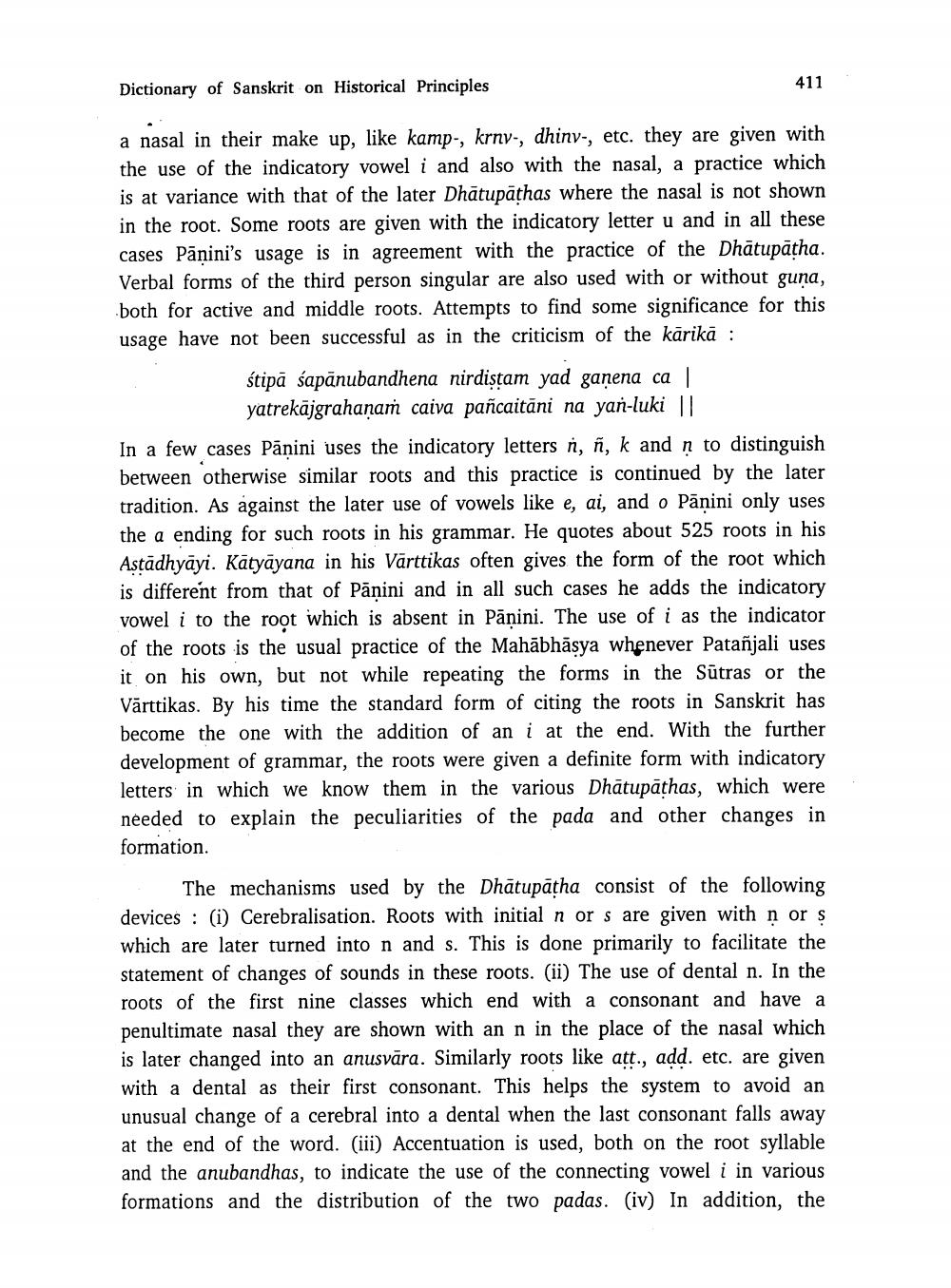________________
Dictionary of Sanskrit on Historical Principles
411
a nasal in their make up, like kamp-, krnv., dhinv., etc. they are given with the use of the indicatory vowel i and also with the nasal, a practice which is at variance with that of the later Dhātupāthas where the nasal is not shown in the root. Some roots are given with the indicatory letter u and in all these cases Pāṇini's usage is in agreement with the practice of the Dhātupātha. Verbal forms of the third person singular are also used with or without guna, both for active and middle roots. Attempts to find some significance for this usage have not been successful as in the criticism of the kārikā :
śtipā šapānubandhena nirdistam yad gañena ca|
yatrekājgrahanam caiva pañcaitāni na yan-luki ||| In a few cases Panini uses the indicatory letters n, ñ, k and n to distinguish between otherwise similar roots and this practice is continued by the later tradition. As against the later use of vowels like e, ai, and o Panini only uses the a ending for such roots in his grammar. He quotes about 525 roots in his Astādhyāyi. Kātyāyana in his Vārttikas often gives the form of the root which is different from that of Pāṇini and in all such cases he adds the indicatory vowel i to the root which is absent in Pāṇini. The use of i as the indicator of the roots is the usual practice of the Mahābhāsya whenever Patañjali uses it on his own, but not while repeating the forms in the Sūtras or the Vārttikas. By his time the standard form of citing the roots in Sanskrit has become the one with the addition of an i at the end. With the further development of grammar, the roots were given a definite form with indicatory letters in which we know them in the various Dhātupāthas, which were needed to explain the peculiarities of the pada and other changes in formation.
The mechanisms used by the Dhātupātha consist of the following devices : (i) Cerebralisation. Roots with initial n or s are given with n ors which are later turned into n and s. This is done primarily to facilitate the statement of changes of sounds in these roots. (ii) The use of dental n. In the roots of the first nine classes which end with a consonant and have a penultimate nasal they are shown with an n in the place of the nasal which is later changed into an anusvāra. Similarly roots like att., add. etc. are given with a dental as their first consonant. This helps the system to avoid an unusual change of a cerebral into a dental when the last consonant falls away at the end of the word. (iii) Accentuation is used, both on the root syllable and the anubandhas, to indicate the use of the connecting vowel i in various formations and the distribution of the two padas. (iv) In addition, the




